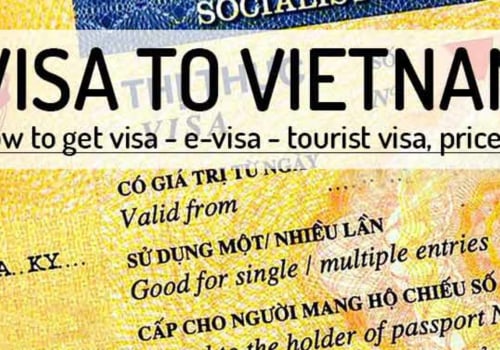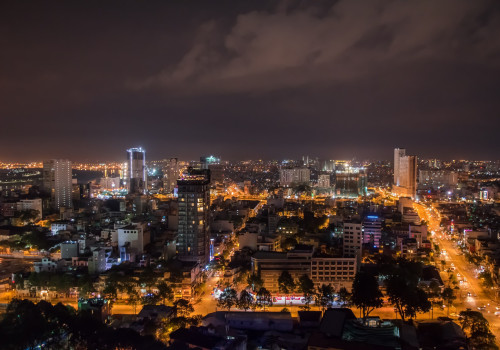Ho Chi Minh City has many places of historical importance. Home to the War Remnants Museum, Independence Palace, Cu Chi's intricate tunnel system and other iconic landmarks, Saigon is perfect for both history buffs and those who need a beginner's lesson on Vietnam's rich past. It's been almost 45 years since this city appeared on our television screens every night, but under a different name. Formerly known as Saigon, Ho Chi Minh City was renamed after the late North Vietnamese leader shortly after the end of the Vietnam War, although many people, including Vietnamese, still use the old name.
Fortunately for visitors, most of the main sites of interest are located in a relatively small area (District 1 - Quán) in the city center, making them easily accessible on foot. Here are nine reasons to spend time in Ho Chi Minh City. The palace is located at the southern end of a wide avenue with French-influenced architecture. An earlier palace on the site was home to French administrators, later renamed the Palace of Independence after France left.
It became the home and offices of the presidents of South Vietnam. The current palace was built between 1962 and 1966 to replace the old one that had been severely damaged by Viet Cong shelling. After the end of the war, it was officially renamed the Reunification Palace, but both names are still in common use. A short walk north of the Reunification Palace is the famous Cathedral Basilica of Our Lady of the Immaculate Conception, better known as the Cathedral Basilica of Notre-Dame de Saigon.
Built between 1863 and 1880, when Vietnam was colonized by the French, this cathedral stands out for the iconic statue of Mary on its east side. Right next to the cathedral is another well-known Saigon attraction, the Saigon Central Post Office, built just 6 years after the cathedral. Other area attractions include the Ho Chi Minh City Museum, located in Gia Long Palace, east of Independence Palace. This was the house of the presidents when the Palace of Independence was being rebuilt.
Museum of Ho Chi Minh City (Gia Long Palace) Also in District 1 is the famous Ben Thanh Market, formally established in 1859, but on the site of informal markets dating back another hundred years. The current building dates back to 1912, but it has been restored. Guests at the restaurant Quán Ngon 138 Bespoke itinerary & prompt response within 24 hours. Bold, wild, exhilarating and a little lawless, Ho Chi Minh City has become one of Southeast Asia's crown jewels.
Bangkok may be better traveled and Hanoi is arguably more historic, but this city, with its booming economy, magnificent nightlife and fast-paced energy, is unlike any other. Here are 11 reasons to pack your bags and head east. If you are looking for a large number of Chinese temples, visit Cholon or take a day trip to Cao Dai Temple in Tay Ninh, which is easily combined with a tour of the nearby Cu Chi tunnels. Formerly full of opulence and rich colonial residents, this former apartment building now houses shops, cafes, bars, offices, a cooking school and several floors of peeling paint, rusty shutters and the beauty of premium Saigon.
Home of the president of South Vietnam during the United States War, as locals prefer to call the Vietnam War, this is the place where the first North Vietnamese communist tanks crashed into the doors on the morning of April 30, 1975, prompting the official surrender of Saigon. You can buy textiles in Tan Dinh, pick up kilograms of spices in Chinatown or dive into a neighborhood street market like Vo Duy Ninh in Binh Thanh. Although this market in District 1 is crowded and packed with pickpockets, it is the ideal place to buy some handicrafts or bargain souvenirs, or to try traditional (and cheap) Vietnamese food. If the De Tham region is too busy for you, keep in mind that there is a smaller group of budget hotels in an alley a few blocks south of Co Giang.
Inside, a series of rooms present an appalling portfolio of photographs of mutilation, napalm burns and torture. A short walk through the dense group of streets that make up this Chinese ghetto will make it clear that, even by the standards of this city, the mercantile mania here is impressive. All the accessories of economic success are here: elegant restaurants, flashy hotels, swanky bars and clubs and shops selling imported luxury goods, adding a glossy finish to the city's turbulent landscape of French colonial architecture, venerable pagodas and austere Soviet-style housing blocks. A statue of Uncle Ho cradling a young boy looks at the small park in front of the building, where flower beds add a touch of color.
At the center of the scale are the cheerful watering holes around Bui Vien and the girls' bars, which date back to GI's obscene spots of the 1960s.
Ho Chi Minh City
's bars and pubs range from hole-in-the-wall dives to chic cocktail lounges that wouldn't be out of place in a European capital. Watch the city lights at sunset as you take a Tom Collins from the deck of a traditional 19th century dragon boat, watch a show and enjoy a buffet meal in style. Framing the two gods of the gate and the pair of stone lions assigned to keep away evil spirits are golden panels depicting petrified scenes from the traditional life of the Chinese court: dancers, musicians, nobles in handchairs, a game of chess played.Nowadays, it has exhibits showing the history of the city and the grounds feature cars from the French era. . .




